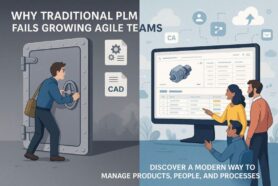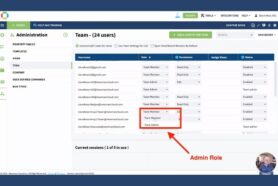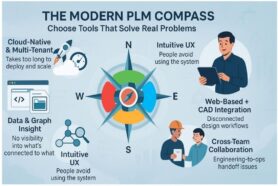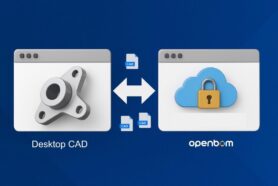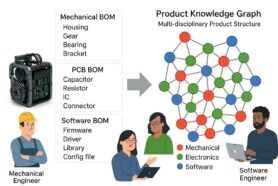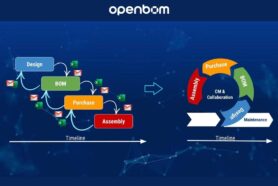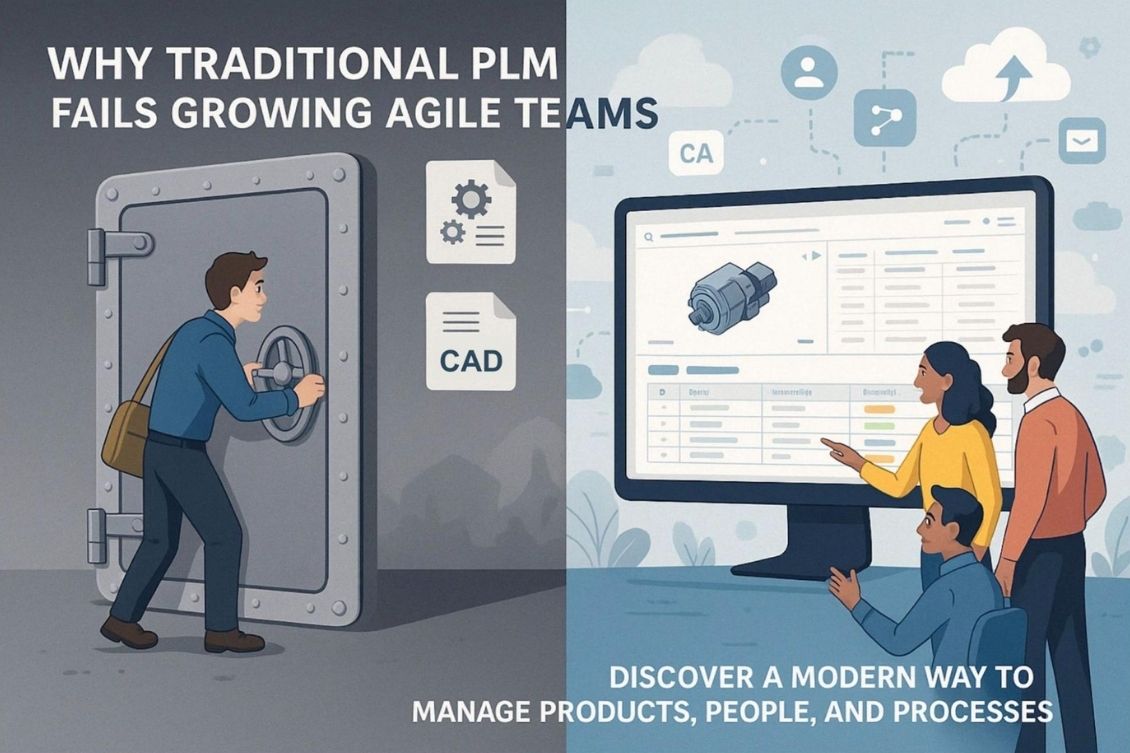
At OpenBOM, we talk to a lot to agile engineering teams and growing manufacturing companies. And the story we hear? It’s surprisingly consistent.
“We started by managing our CAD files in Google Drive, and putting product data and BOMs in Excel. It worked for a while… until it didn’t.”
What happens next is usually a moment of friction: files get out of sync, multiple BOMs start floating around, and no one’s sure which revision is the latest. And when it’s time to place an order or build a prototype — chaos of not updated data, wrong revisions and files, delayed component part shipments and subcontractors deliveries.
So naturally, the team starts looking for structure. Someone says, “Should we look at PLM?”
That’s when things get interesting.
“We thought we’d just push CAD data to ERP and call it a day. But it turns out, the product isn’t exactly what we designed — it includes a different structure of mechanical parts, PCB assemblies, specific materials, and packaging details. The ERP structure is not supposed to be the same, some of the parts should not be going there. We need to organize and review before anything goes to ERP.”
“Also… we haven’t actually chosen an ERP yet. We’re still managing procurement in spreadsheets, Quickbooks, and emails.”
And eventually:
“We looked at traditional PLM systems, but they feel like overkill. These tools were built for aerospace companies with big teams and very structured BOM processes. We don’t need a PLM rocketship. We need something that just works.”
Sound familiar?
This is where traditional PLM tools fail small and mid-sized manufacturers. And it’s why modern tools — built differently, designed for today’s teams — are stepping in to fill the gap.
The Problem with Traditional PLM
Legacy PLM systems weren’t designed for modern, fast-moving teams. They were made for large enterprises — aerospace, automotive, and high-end defense contractors — with dedicated IT departments, formal roles, and multi-year rollouts.
That model simply doesn’t work for smaller, cross-functional teams trying to ship products quickly and adapt on the fly. Here’s why traditional PLM falls short, and what modern PLM should do instead.
1. Traditional PLM Is Rigid and Heavy
Old-school PLM systems are often just “scaled down” versions of their enterprise counterparts. Sure, vendors may label them as “lightweight” or “SMB-friendly,” but under the hood, they’re still complex, hard to configure, and require weeks or months of setup.
In contrast, a modern PLM should be cloud-native — not just hosted in the cloud, but truly designed for it. It should offer immediate availability, simple onboarding, and configuration that can be done by your internal team, without hiring expensive consultants.
You shouldn’t need a PhD in PLM to get started.
2. It Doesn’t Fit into Your Ecosystem
Today’s product teams use a mix of tools. Maybe your engineers are working in SolidWorks or Fusion. Your procurement team might still live in spreadsheets. You may have a lightweight MRP, or maybe you’re planning to bring in ERP later.
Traditional PLM assumes you already have a structured, enterprise-wide stack, while mostly focusing on engineering and CAD file management tasks. But modern companies operate in hybrid environments, and they need a PLM that connects across that spectrum — to file-based CAD, to cloud-native tools, to whatever ERP you eventually choose.
Modern PLM is about meeting you where you are — not forcing you to change everything to fit.
3. It Doesn’t Enable Collaboration
One of the biggest problems with traditional PLM is that it was built with control in mind, not collaboration. The main scenario supported by enterprise PLM systems (and scaled down to small team is CAD file management). This is how enterprise PLMs thought about “small teams” – we just give them simple file manager. Therefore, these systems are often based on locking files, checking data in and out, and maintaining rigid version histories. That made sense in a world of isolated engineering departments — but it’s not how modern teams work.
When mechanical, electrical, procurement, and operations people need to work in parallel, waiting in line to update the BOM just doesn’t cut it.
Modern PLM enables real-time collaboration. Multiple users should be able to work on the same product structure — editing, reviewing, and refining — without overwriting each other. You would expect the same item in a BOM updated by mechanical engineering, PCB designer, and procurement person for ordering purposes. A true multi-disciplinary product structure needs to support everyone, not just the CAD team.
4. It Makes Data Hard to Move
Another frequent complaint we hear is how hard it is to get data in — and even harder to get it out — of traditional PLM systems. They are not operating in isolation and many data interfaces requires passing data in and out easy. This is not how traditional PLM designed to work.
Traditional PLM software require an “implementation phase” just to import your existing product data. Even after that, sharing BOMs with suppliers or pulling data into procurement spreadsheets can be a nightmare. And if you ever want to migrate away? It will be another “project”. Also, keep in mind that for all “traditional” PLM, access to API, configuration of the system and customization is part of the “enterprise package”. The idea of “scaled down” packages is the cut everything down to the bare bones and introduce “OOTB simple package”.
Modern PLM takes a different approach. It’s open, flexible, and built to move with your workflows. You should be able to import a BOM from Excel, share a live view with a contract manufacturer, or export your data to ERP — all without asking for help.
In today’s world, your product data needs to be fluid. Locked-in systems so much like 1990s…
5. The User Experience Feels Outdated
User experience matters more than ever. If your engineers or buyers hate using a system, they’ll avoid it — no matter how powerful it is.
Unfortunately, most traditional PLM systems feel like they were designed 20 years ago. The interface is cluttered, confusing, and outdated.
A modern PLM should look and feel like the other “modern spreadsheet like” SaaS tools your team already uses. Clean interface. Typical browser experience. Easy onboarding.
6. Traditional PLM Misses the Bigger “Connected” Picture
This might be the most important point of all: legacy PLM systems only focus on engineering.
They do a decent job of managing design files and engineering changes, but they don’t help with what happens next — procurement, planning, vendor communication, or production readiness.
That’s where OpenBOM breaks the mold. We believe that modern product development isn’t just about CAD files and ECOs — it’s about taking a design and turning it into a real, manufacturable product. Most of agile engineering teams and growing manufacturing businesses are looking for “end-to-end” story. This is why OpenBOM has been taking a different approach – not focusing on engineering silo, but providing a ‘connected’ experience and functions for design, engineering planning, and procurement together.
OpenBOM brings together three critical capabilities in a single, unified platform:
- PDM to manage your design data and CAD integrations
- PLM to manage items, xBOMs, revisions, and multi-disciplinary product structure
- Procurement & Planning to help your team place orders, manage vendors, and prepare for production
It’s not three systems stitched together — it’s one platform designed to support the full lifecycle from the first design sketch to the first production run. And when you’re ready to scale up and bring in ERP? OpenBOM connects with that too.
Conclusion
If you’re a small or mid-sized manufacturer, traditional PLM tools weren’t built for you. They assume organizational structure you don’t have, processes you don’t need, and resources you can’t spare.
What you need is a modern, flexible platform that supports your team across design, engineering, operations, and procurement — without the overhead and complexity of legacy systems.
At OpenBOM, we’ve built exactly that. If your story sounds like the one we started with, maybe it’s time for a new chapter.
👉 REGISTER FOR FREE to see how OpenBOM can help you move beyond spreadsheets, connect your team, and take control of your product data — without the pain of traditional PLM.
Join our newsletter to receive a weekly portion of news, articles, and tips about OpenBOM and our community.


